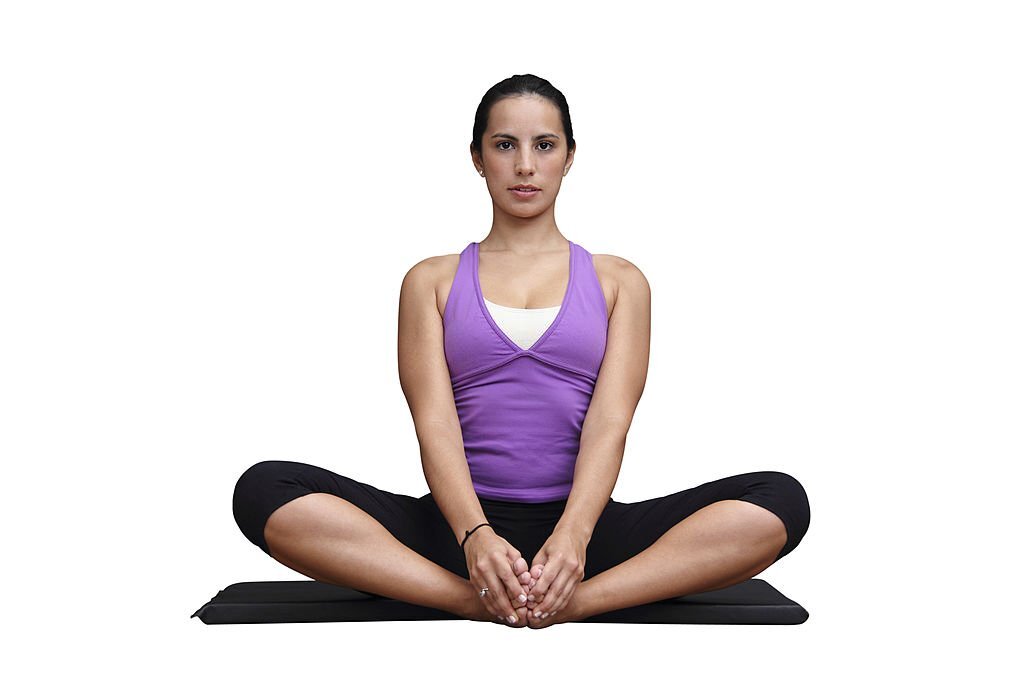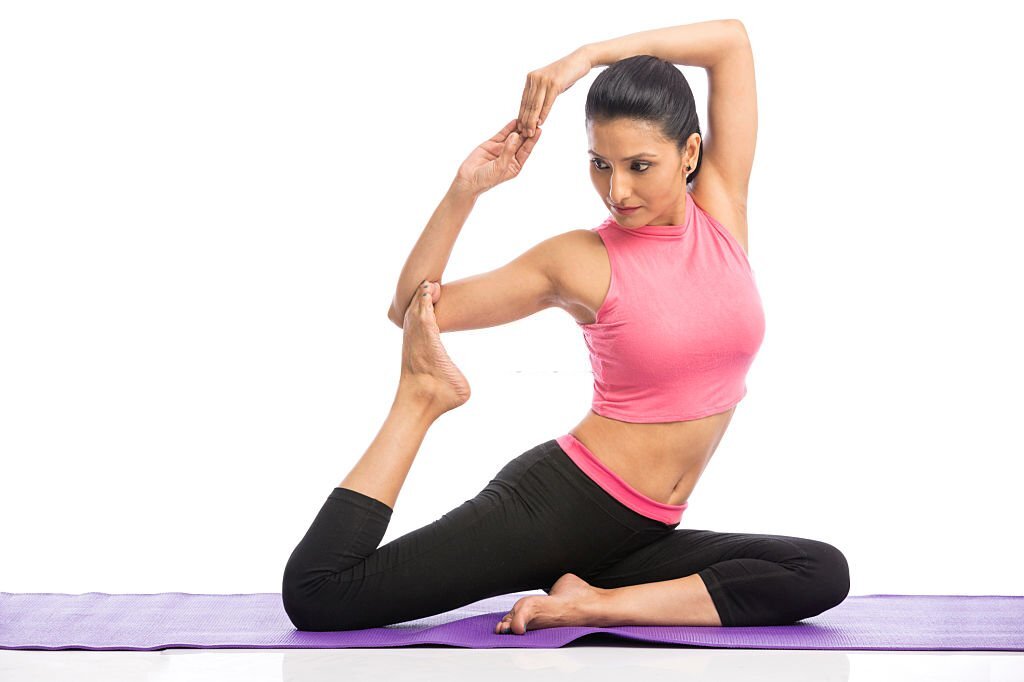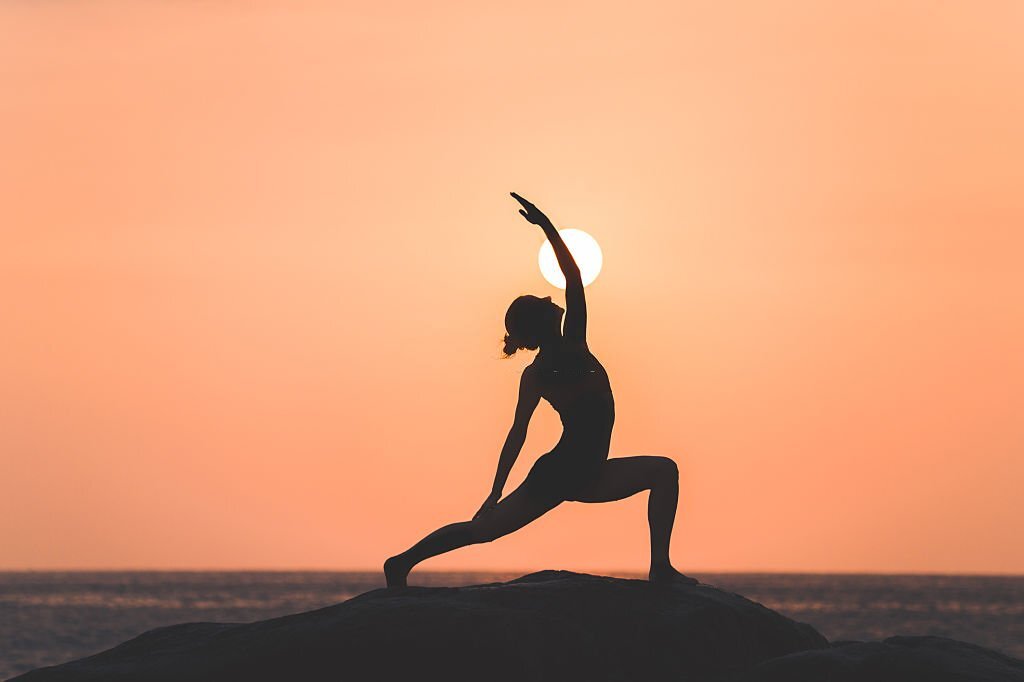Yogasanas
- Home
- Yogasanas

The word Asana is derived from the Sanskrit word ‘asana’ wherein ‘asa’ means ‘to sit down’.
Thus, asana means –
- Sitting down
- Comfortable seating
- A seat
In simple terms, Asanas are ‘Yoga poses or postures’.
In Patanjali Yoga Sutras (c. 2nd to 4th century CE), it is mentioned that Asana is the third among the eight limbs of Ashtanga Yoga / Raja Yoga.
The texts Goraksha Shataka / Goraksha Paddhati /Early Hatha Yogic system (10th – 11th century) and Hatha Yoga Pradipika (15th century), describe 84 asanas, about which they claim to have been originated from the Adi Yogi or Shiva. Of which, Siddhasana, Padmasana, Bhadrasana and Simhasana are the most important ones.

Benefits of Yogasana
- Helpful in physical and spiritual well being.
- Promote health, strength, endurance, balance and flexibility.
- Bust stress, relax a person and cure stress related disorders.
- Improve flexibility, strength and balance.
- Alleviate stress and anxiety
- Alleviate diseases like asthma, diabetes. When clubbed with ideal medication and lifestyle, asanas form good remedies for a wide array of disorders.
- Reduce lower back pain.
- Improve birth outcomes and physical health and quality of life measures in elderly people.
- Reduce sleep disturbances.
- Effective to those suffering from Hypertension.
- Relieve neck pain.
- Effective in symptomatic relief in specific disease conditions like asthma, chronic obstructive airway diseases (COAD).

Purpose of Yogasanas
Spiritual purpose:
The asanas enumerated in Hatha Yoga originally had a spiritual purpose of attaining Samadhi (a state of meditative consciousness).
The aim of yoga (and asanas) involved spiritual manipulation of the subtle body at a more physical level which aimed at destroying poisons (detoxification).
Other purposes:
- To gain control of the breath, to enable Pranayama to work.
- Placing the physical body in positions that cultivate awareness, relaxation and concentration.
- Asanas bring steadiness, health and lightness of the limb. A steady and pleasant posture produces mental equilibrium and prevents fickleness of mind.
- Asanas bring agility, balance, endurance and great vitality, developing the body to a fine physique which is strong and elastic without being muscle bound.
- Physical loosening – Physical loosening has everything to do with the mind’s letting go of restrictions, allowing the natural state of ‘unhindered perfect balance’ to emerge.
- Exploring the conscious and un-conscious mind – Asanas give steadiness, good health and lightness to the limbs.
Some examples of benefits of asanas :
Matsyendrasana
Shavasana
Padmasana
Siddhasana
Paschimottasana
The true meaning of Yoga is Union with God or the universe. The ultimate aim of Yoga is attaining Moksha (salvation). The 8 branches of Yoga are the steps through which one can attain this salvation. In order to be able to reach the last stage, the practitioner of Yoga requires enough physical stamina and stability. This stability is provided by the regular practise of Asanas which are an essential part of Yoga practice.

Sadhguru on Yogasanas
“If you consciously hold an asana, it can alter the way you think, feel, and experience life. This is what Hatha Yoga can do.”- Sadhguru
Yoga, especially asanas should not be practiced indiscriminately. They need to be practiced under guidance of an experienced Yoga tutor.
Practice of asanas comes with their own set of restrictions. Yoga is said to be generally safe when exercised properly. People with some conditions, older people and pregnant woman may need to seek advice and take caution.
Once you initiate with the Yogasana at Asli Ayurveda, it is going to alter your life for good. That you’d be wanting to share your experience with all around.
With the plot of time and space high on energy by the virtue of Vedic chants, guided by Yoga experts, certified of Isha Foundation, Asli Ayurveda organizes for you, the most conducive environment possible, of which you procure the best. Ensuring maximum impact and personal attention, it is in fistful – small batches we hold the Yogasana workshop.
So, without further delay, you want good things happening to you.
Know more about Yogasanas
Rules and Specifications while practising Asanas
– The postures of the body should be steady and comfortable. The body is held poised with the practitioner experiencing no discomfort while doing asana. It is all about mastering the body control. When the person gains control over the body movements, the practitioner becomes free from dualities like heat and cold, hunger and satiety or joy and grief.
This is the first step towards getting relieved from the sufferings by letting off the attachments.
– Asanas are best practiced with rested body, on empty stomach, after having bath.
– Asanas as part of sports medicine need to be performed equally on both sides of the body since they function as active stretches helping to protect muscles from injury from the point of view of sports medicine.
Origin and distribution of Asanas in the timeline of evolution
All asanas have not been created at a time. They have been evolved at different time periods. Some of them are ancient, some are added in the medieval period and many asanas have been added to the list in the present day by the modern day Yoga Gurus.
Some asanas have their origin in India and some have been imported from other countries, getting an Indian touch in due time. Some are pure asanas described in the scriptures of Yoga while most asanas in the modern enlisting are a combination of exercise, asana and gymnastic poses. Thus, the asanas and the concept of asanas have undergone a wide transformation and evolution in the timeline of its emergence and popularity.